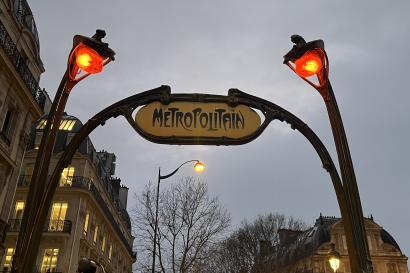Bonjour from Épernay!
Welcome to the Champagne Region of France! France protects the term "champagne" so not all sparkling wines can be called champagne. The grapes used to make champagne can only come from certain lands in France. For our luxury brand marketing class, we took a short bus ride to Épernay, one of the few areas allocated to champagne production.



For France to deem a sparkling wine "champagne", producers need to prove that (1) the grapes used were grown in the champagne region and (2) the sparkling wine must be produced through the champagne method. In this method, there are two fermentations, one in the vats (pictured above) and one in the bottle.

Nicolas Feuillatte is so successful because they created a lower priced champagne sold specifically in supermarkets, where 75% of champagne is sold in France. Shoppers choose Nicolas Feuillatte at their grocery stores knowing that the brand guarantees a good quality champagne despite its lowered price. It was a genius marketing strategy that led to the business's growth.


Our tour guide showed us how the riddling process helps extract the yeast (used to ferment the wine) out of the bottle. This ingenious process was invented by Madame Veuve Cliquot, the first modern business woman. She ran her own luxury champagne brand, Veuve Cliquot.






Funny story we learned in Luxury Brand Marketing: Dom Perignon (the champagne brand depicted in the relief above) does not have the age old back story they boast. Dom Perignon is not related to the seventeenth century monk at all. The Dom Perignon champagne is actually an extension of the Mercier brand. It was merely named after the historic monk. The brand was actually created as a marketing scheme to compete with Clos du Mesnil by Krug.



This was definitely the best field trip ever. What other class allows you to explore your appreciation for champagne!
Salut,
Gwen

Gwen Lee
<p>Salut! Je m'appelle Gwen. I am a sophomore at Babson College and currently about 11% fluent in French. I hope to remedy that while wining and dining in the beautiful city of Paris. I am majoring in Business with a focus in Marketing. Follow along my stories to experience the ups and downs of studying abroad à Paris!</p>







